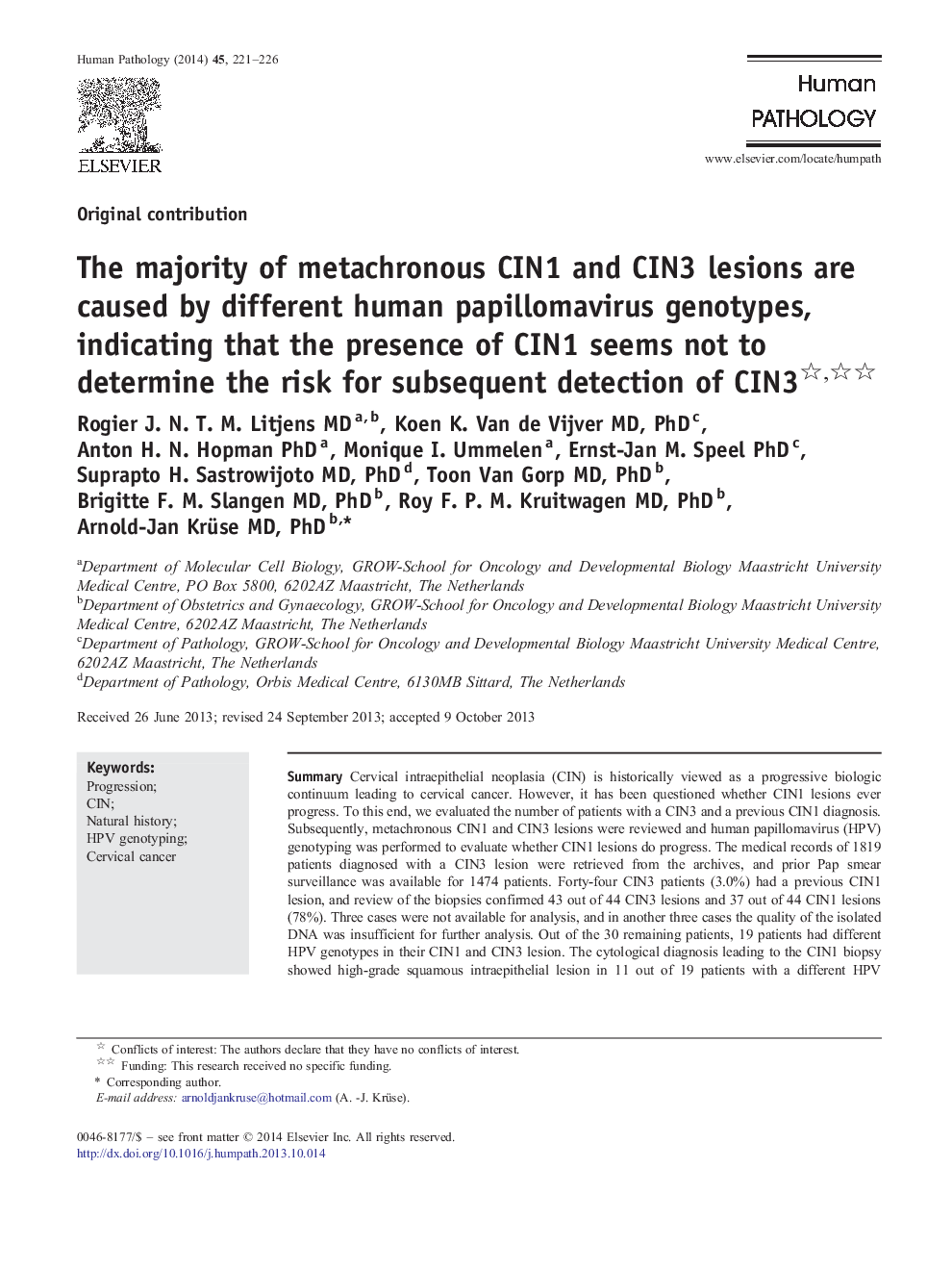| کد مقاله | کد نشریه | سال انتشار | مقاله انگلیسی | نسخه تمام متن |
|---|---|---|---|---|
| 4133244 | 1271413 | 2014 | 6 صفحه PDF | دانلود رایگان |

SummaryCervical intraepithelial neoplasia (CIN) is historically viewed as a progressive biologic continuum leading to cervical cancer. However, it has been questioned whether CIN1 lesions ever progress. To this end, we evaluated the number of patients with a CIN3 and a previous CIN1 diagnosis. Subsequently, metachronous CIN1 and CIN3 lesions were reviewed and human papillomavirus (HPV) genotyping was performed to evaluate whether CIN1 lesions do progress. The medical records of 1819 patients diagnosed with a CIN3 lesion were retrieved from the archives, and prior Pap smear surveillance was available for 1474 patients. Forty-four CIN3 patients (3.0%) had a previous CIN1 lesion, and review of the biopsies confirmed 43 out of 44 CIN3 lesions and 37 out of 44 CIN1 lesions (78%). Three cases were not available for analysis, and in another three cases the quality of the isolated DNA was insufficient for further analysis. Out of the 30 remaining patients, 19 patients had different HPV genotypes in their CIN1 and CIN3 lesion. The cytological diagnosis leading to the CIN1 biopsy showed high-grade squamous intraepithelial lesion in 11 out of 19 patients with a different HPV genotype in the metachronous CIN1 and CIN3 lesions. High-grade squamous intraepithelial lesion was detected in 7 out of 11 patients with the same HPV genotype. Our results show that CIN3 lesions are rarely preceded by a CIN1 lesion. The majority of metachronous CIN1 and CIN3 lesions are caused by different HPV genotypes, indicating that the presence of CIN1 seems not to determine the risk for subsequent detection of CIN3.
Journal: Human Pathology - Volume 45, Issue 2, February 2014, Pages 221–226